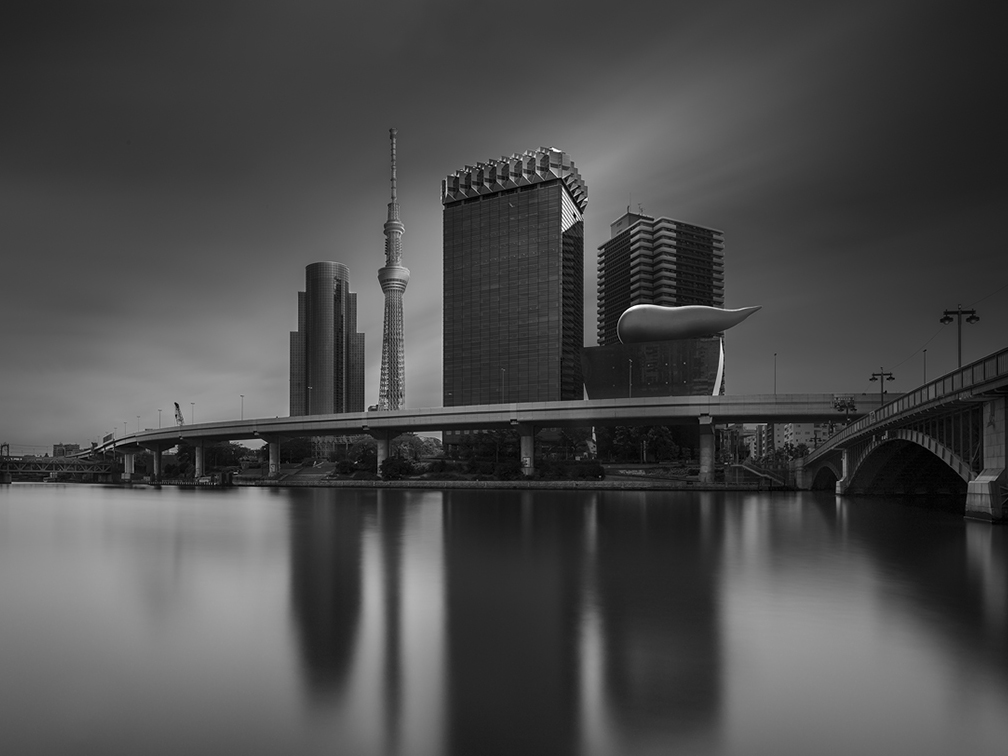Yoshihiko Wada has been winning awards for his fine art photography since 2015. But he was still overwhelmed when, in April this year, he was named Discovery of the Year 2017 by the Tokyo International Foto Awards (TIFA). “My kind of photography is pretty niche, so when I accepted the award, I was astonished,” Wada tells TW.
The award category was architecture and the series that saw him take home the title is called “The City of Juncture.” It’s a striking, moody collection of images that transforms Tokyo’s often ugly-looking highways and buildings into something mesmeric. Rough edges are smoothed to the point where concrete looks like water (most likely inspired by Wada’s early fascination with photographing waterfalls), the ocean turns to glass, and a cloudy sky looks like it’s made from smudging charcoal. There is a sense of desolation but also of expansive-ness, two things that any Tokyoite will tell you don’t exist in this city. There are no people or cars or sense of the living in his photographs. But rather than merely an apocalyptic air, the images convey a sense of drama and awe. There is light, captured exquisitely at dawn or dusk. There is color, but just a hint of it here and there. And there is peace. To find out more about Wada’s inspiration and process, we sat down with the self-taught photographer for a quick chat about his work.
Tell me about your background.
Growing up in Tokyo, I played in a band and then went to a music college, where I studied classical composition. After graduation, I worked for a famous composer, then found a job in composition at a video game company in Osaka. That was 20 years ago. Since then I’ve worked as a sound designer in the video game industry.
When did you start getting into photography?
Maybe around four or five years ago. I got tired of being stuck in the studio hearing music or creating sound or playing video games every single day. One day, I decided to borrow a camera and I used it at my daughter’s sports day – it hooked me. Gradually my interest shifted to cityscapes and architecture, especially black and white images. I started publishing my photos online and I was lucky as they started to get a little popular.
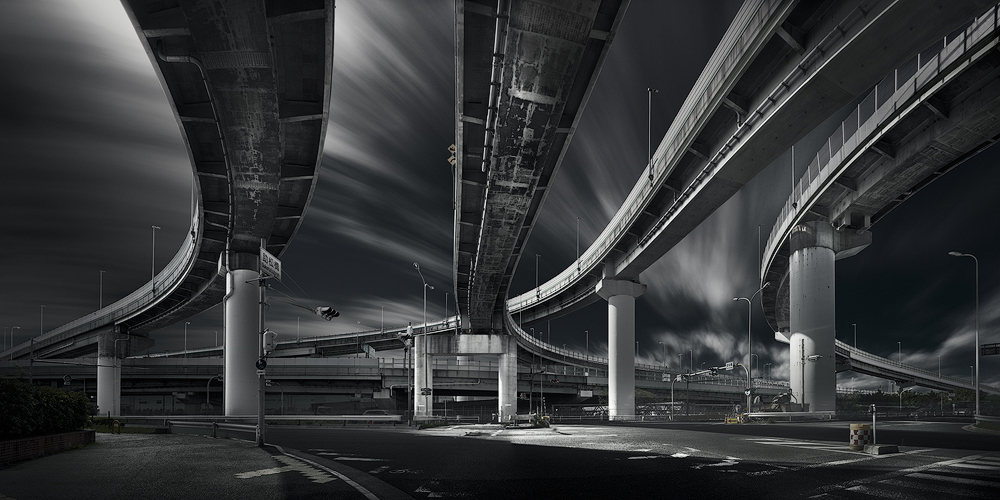
Does your job as a sound designer influence your photography?
Yeah, I think so. My process for creating video game sounds and photos is pretty similar. They are mutually influential right now. You can’t see sound so you have to imagine it when you create it. And with my style of photography, I have to imagine the end result too. In my craft as a sound designer, I record the sound, combine and edit it for an image. As a photographer, I take a photograph and edit it to achieve my final image. It takes me a long time to finish an image, maybe around 50 hours. I am very nit-picky with the detail of my photography, and now I’ve started to become much more careful with my sound design too.
I’ve seen a lot of photographs of Tokyo but never any like yours.
That’s good to hear. I researched a lot on Tokyo projects, and found there are lots of nightscapes and blurred snapshots, but not so many fine-art-style daytime photographs. So that’s why I decided to focus on fine art photography. I mainly use a wide-angle lens and panorama.

You used to focus on waterfalls, so how did you progress to architecture?
There is a beautiful waterfall near my house so I would go there every weekend. And of course, I have been to many waterfalls in the Kansai region. I think waterfalls and cityscapes are not too different – a waterfall is a kind of natural architecture, by the architect called nature, and they, of course, last very long. So my approach to waterfalls and architecture is the same. Waterfalls were my first interest and it was a natural instinct for me. I still like waterfalls.
Of course, a waterfall is naturally beautiful, but you manage to make concrete structures look beautiful…
Architecture, a bridge or a junction, when I see them I feel human. I see these kinds of gigantic architectural structures, all made for our convenience, it’s crazy, and I feel a sense of human greatness.
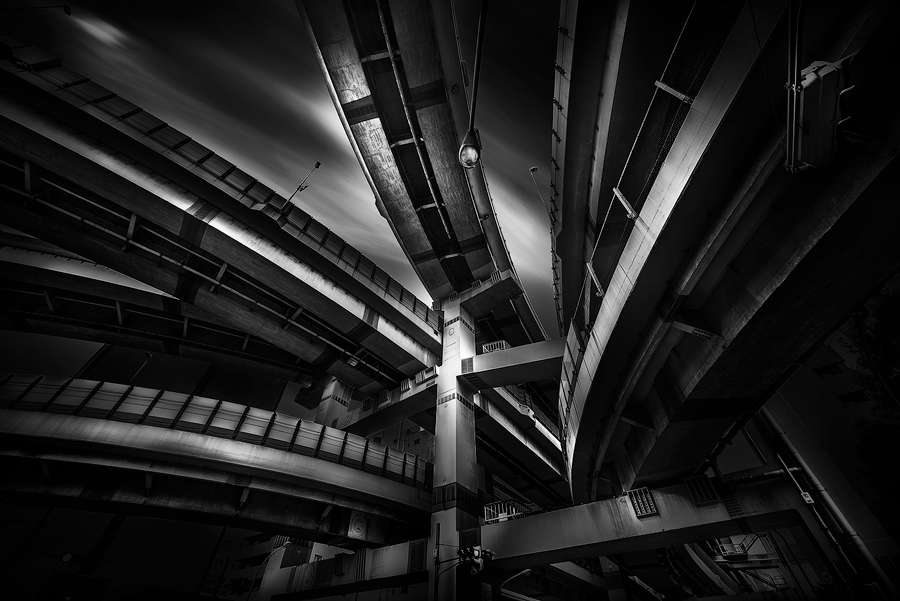
![]()
Do you find the structures pretty or just fascinating?
Both. Some just look messy at first glance. But especially during the night-time, artificial lighting reveals another side to the architecture. That’s why night photography is generally so popular. For me, black and white can extract their beauty, too.
Is there something specific about Japanese or Tokyo architecture that you find intriguing?
Living in Osaka, I really like the architect Tadao Ando; there is a lot of architecture by him here. He also focuses on concrete. Every time I see his creations I feel inspired.
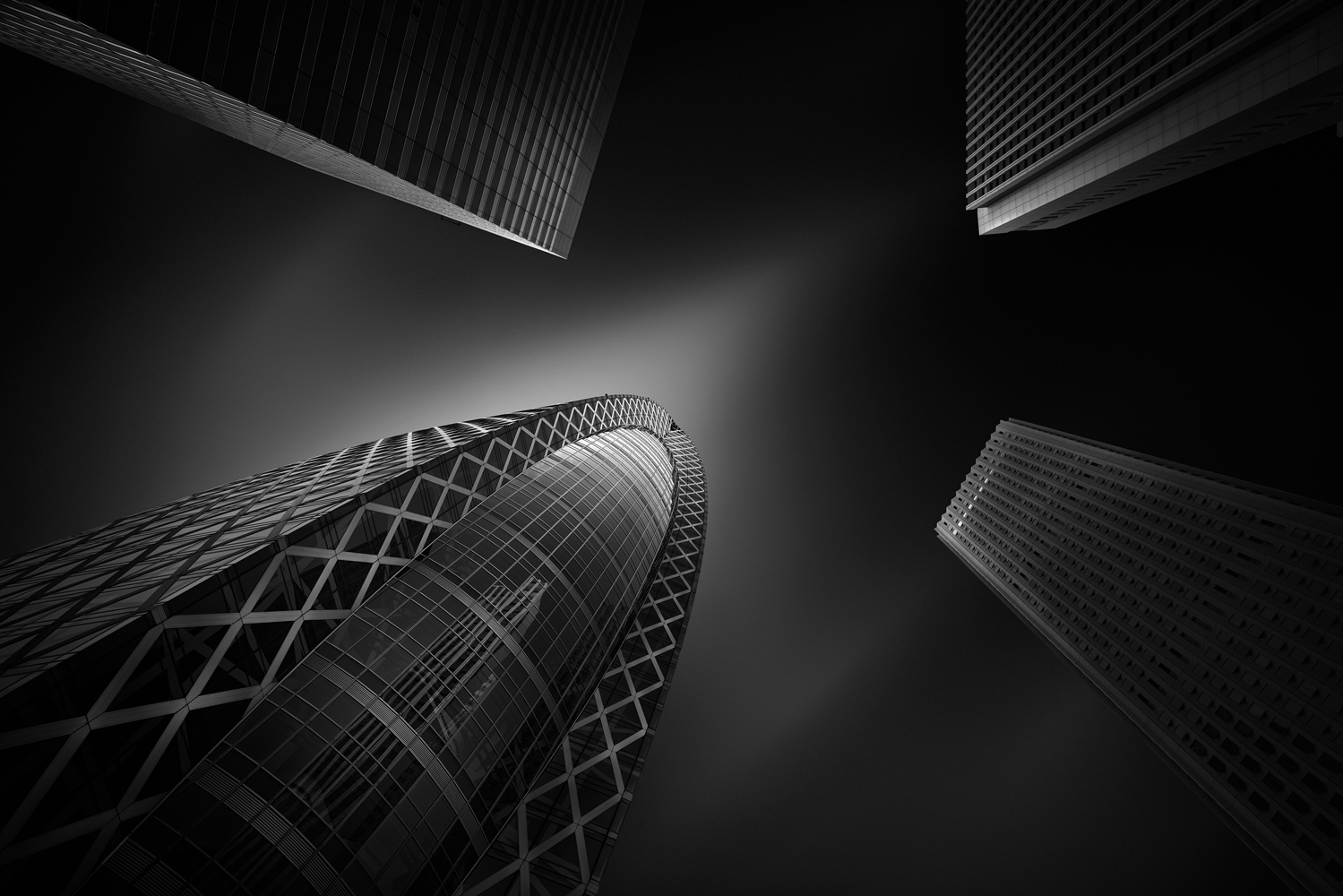
Tell me about the process of taking these photos.
I arrive at the location at, say, 6am, and spend all morning there. Before I shoot the subject, I have to research the location, and set up my tripod, and wait for the light to be right. I use panorama long exposure, so I need to take maybe six different shots to create one image. Each long exposure shot takes about three to five minutes, sometimes 10 minutes. Since the time is passing and the light is changing, the scene before me is changing too, so that’s also interesting – or challenging. With long exposure, the actual buildings are stable but the background becomes blurred since it has moving objects, but I find it interesting to contrast those elements. In hyper-long exposure, passing pedestrians don’t appear in the final image. If there are people who hang around in the shot, then they appear almost as ghosts in the photograph.
And why do you choose such muted colors?
I usually focus on black and white, but my TIFA award-winning photo has a bit of red in it, running along the side of the highway. That image was initially black and white but I felt something was wrong and missing; the color wasn’t that great, so I wanted to keep the red line, but leave the black and white essence. I began adding some color back into the photo, little by little. That’s why it’s muted. I just wanted to add color but not to disrupt too much.
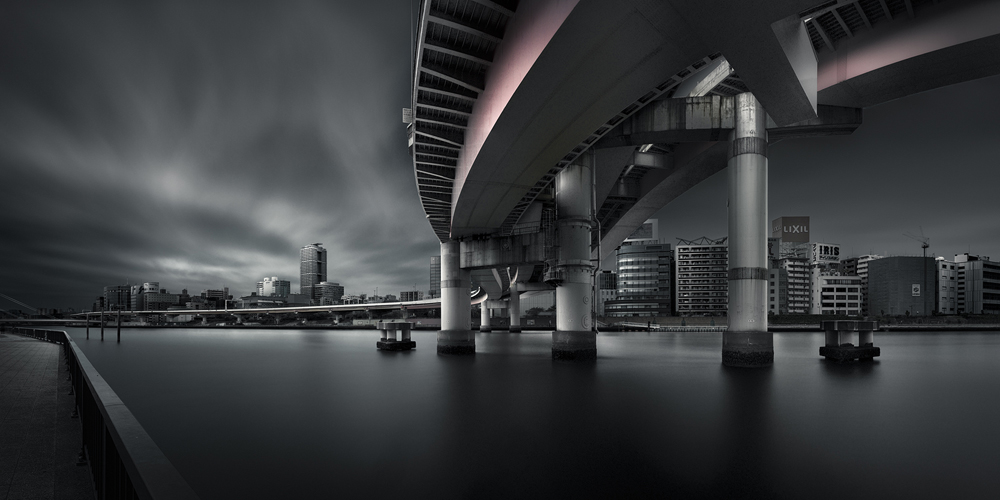
Do you think your photos offer a different image of Tokyo?
I wish! If people around the world happen to see my photos and then want to come to Tokyo because of a photographer like me, that’s very fascinating for me.
Any downside to the art?
In the middle of the city, under the junctions, the fumes and smells are pretty bad. I always wear a mask. I wouldn’t actually recommend it for a photographer! [laughs]
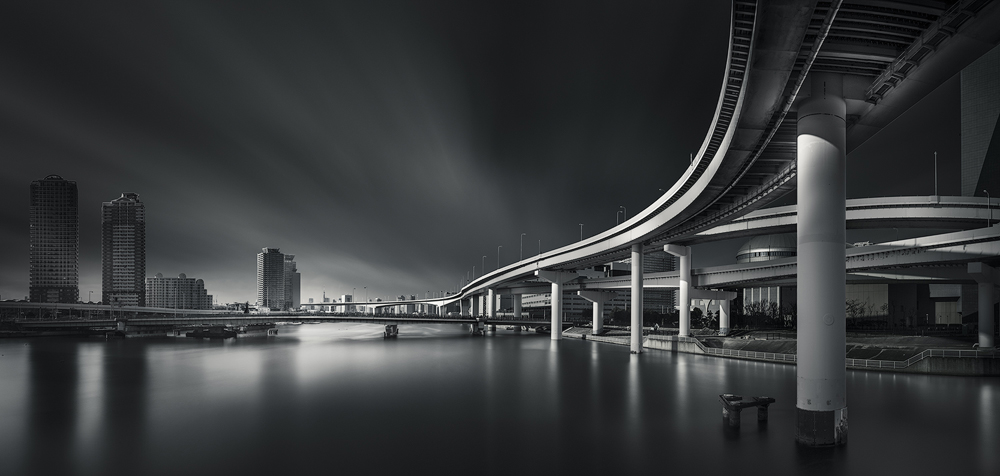
For more of Yoshihiko Wada’s work, go to yoshihikowada.com

